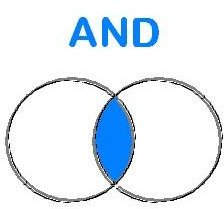ESL Lessons on: and, or, but
Introduction
These ESL lessons on and, or, but begin with the words and, or, but written on the board. Ask students to complete the following sentences from the ESL and, or, but worksheet. To organize this lesson, if you are being observed by administration, consider using an ESL lesson plan template.
I like to eat ice cream,______________ I like to eat broccoli more!
He enjoys walking on the beach _____________ going to Dale’s house.
She loves dancing ____________________ playing the trumpet. Both are fine.
Brainstorm “and” “or”
Once your students have guessed, begin to teach the differences and similarities in these three English words. Explain to them that “and” is a connector. It brings to similar things together. Write a bubble on the board and have your students think of things that go together. Have them write what you write on the board in their notebooks. Examples include, black and white, ketchup and mustard, dogs and cats, school and home, etc.
Now write another bubble for “or”. Explain that “or” divides things. It is either one thing “or” another. Examples of this include staying or leaving, coming or going, eating or drinking, sitting or standing. him or her, etc.
Using the front table, lay out two objects. Ask for a volunteer to help you. Ask the volunteer to come to the front of the class to get something. Tell them that they can have either the pen “or” the pencil. Let them choose. Repeat this for other items as well. Then switch to using “and”. This informal assessment will give you a good understanding of who knows the difference between “and” and “or” at this point. This will also help your students understand the day’s vocabulary a bit better.
Worksheet
At this point refer students to activity one on the ESL and, or, but worksheet. The first three problems are given below.
Fill in the blanks with either “or” or “and”
1. They want a dog, a cat, _____________ a fish in the same room.
2. She would like either macaroni _________________ a hamburger.
3. He likes to swim _____________________ dive.
When your students have finished filling out these problems, go over the answers in class. Answer any student questions and then move on to activity two.
But why?
Explain to your students that the word “but” divides ideas. It turns the sentence around. One way of showing this physically is to walk to one side of the room saying “ I want to go over here.” And then saying, “But, this side of the room is nice too." and then turning around. When you get to the other side of the room say, “Yes, but the other side was nice as well.” Keep going back and forth until your students laugh and you have some fun as well. When you are finished acting like a fool, assign them the activity two work and guide them through it as needed.
The Theater

Tell your students that they will be performing a small skit using the words “and”, “or” and “but”. Have students form groups of three in which each person will either be “and”, “or”, or “but”. They must write at least three sentences for each student to be performed in class by the end of the class.
Assessment/ Wrap Up
The skit and worksheet will give you a good understanding as to your students’ comprehension of the day’s vocabulary. The skit serves as an informal assessment. These ESL lessons on and, or, but conclude with the skit. Further assessment on the vocabulary can be given in the following lessons.
Sources / Image references
Sources
https://www.rong-chang.com/lsnplan.htm
Image References
https://commons.wikimedia.org/wiki/File:And.JPG
https://commons.wikimedia.org/wiki/File:MovieTheatre_gobeirne.jpg
This post is part of the series: ESL Lesson Plans
Great ESL lesson plans!
